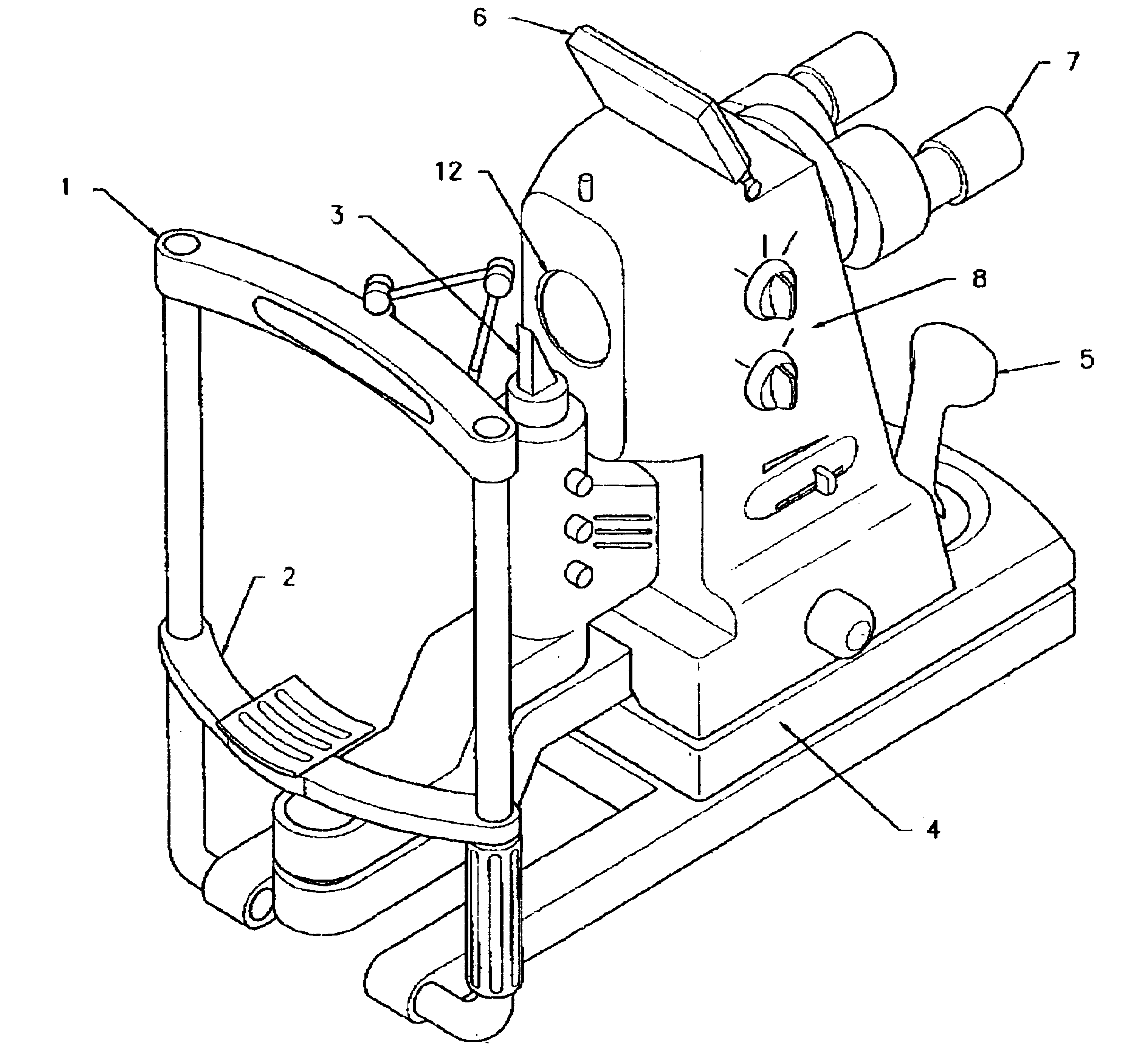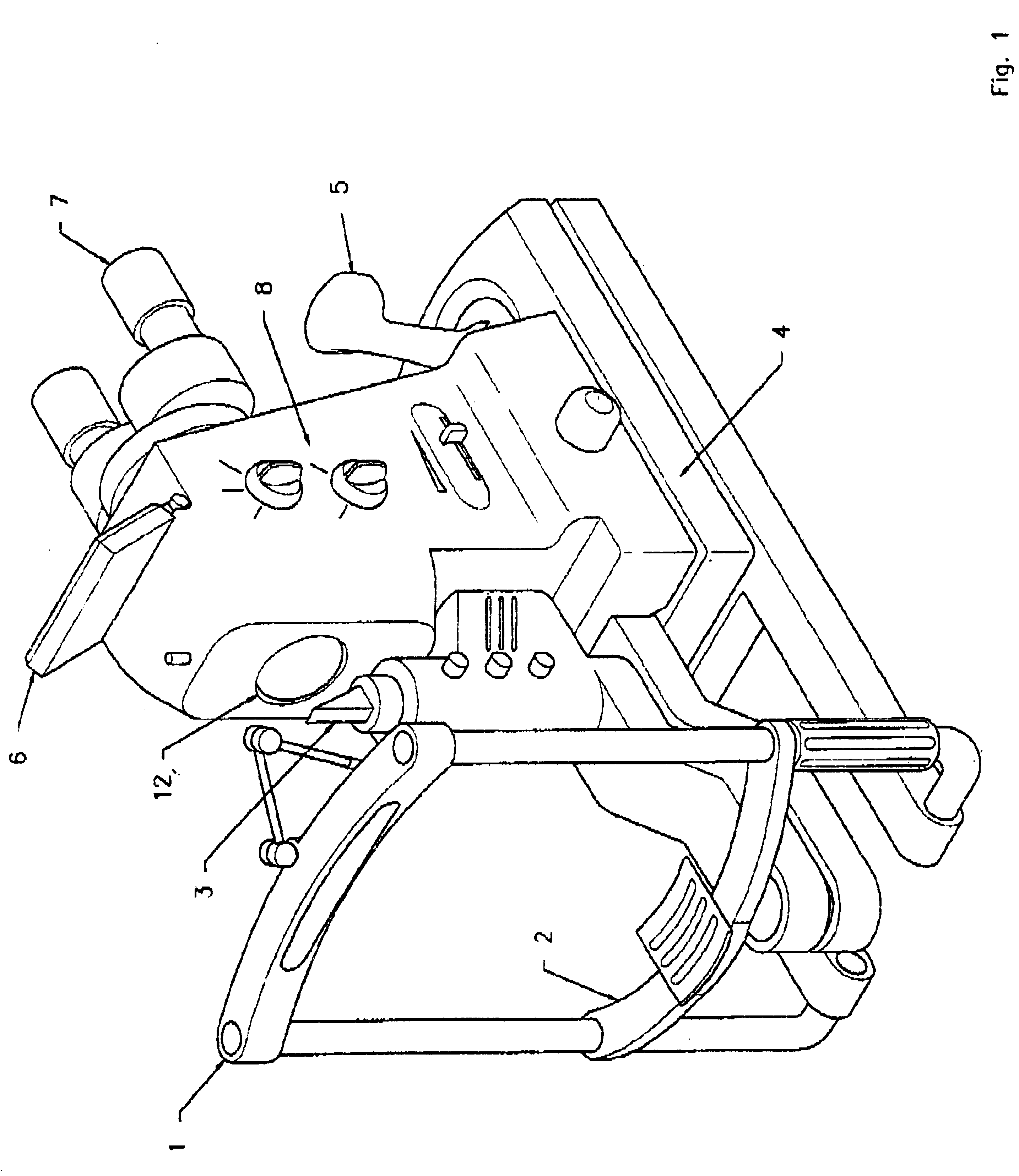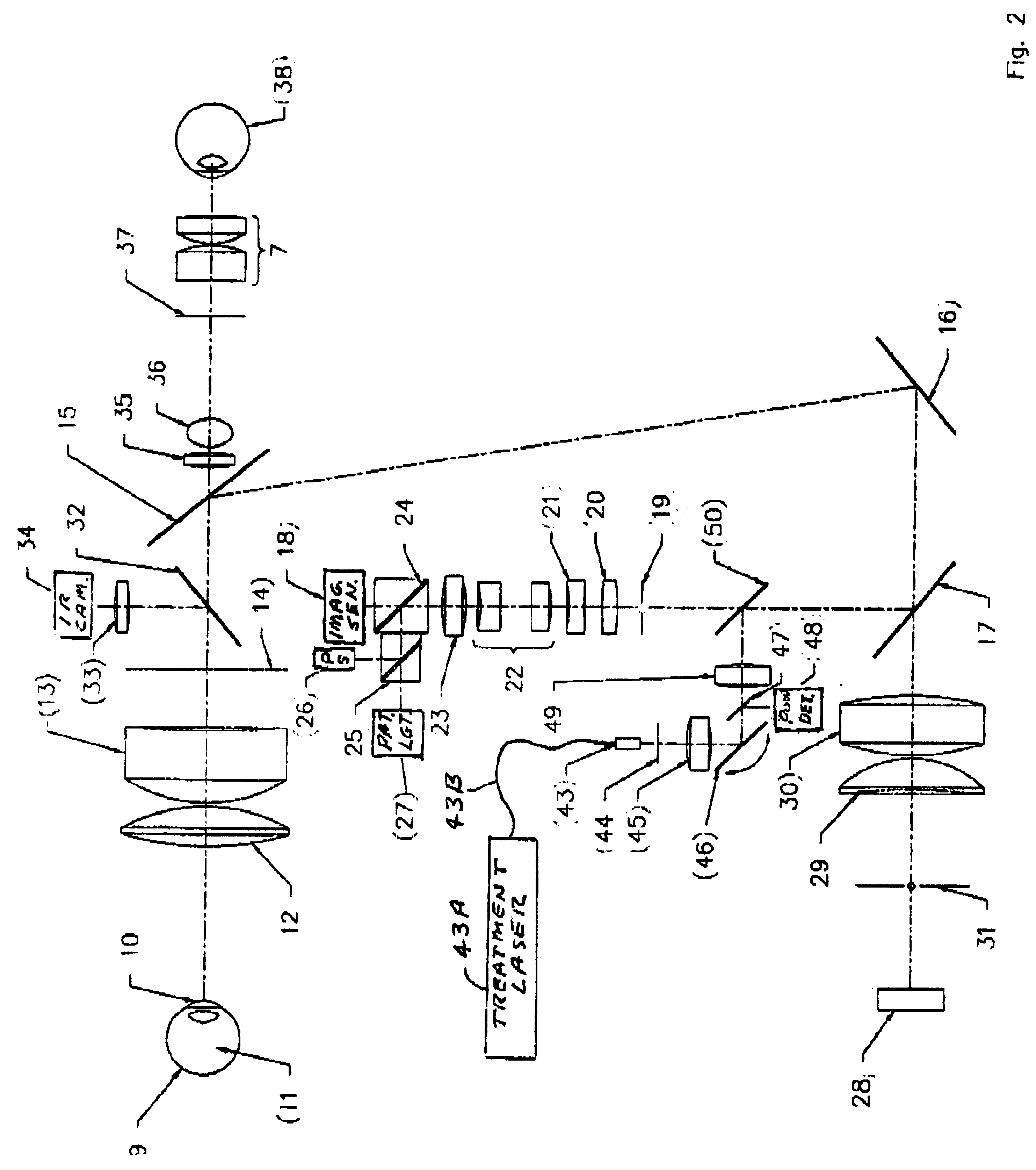Digital eye camera
a digital camera and eye technology, applied in the field of laser eye surgery, can solve the problems of difficult task, complicated system use, and inability to hold the laser lens steady,
- Summary
- Abstract
- Description
- Claims
- Application Information
AI Technical Summary
Benefits of technology
Problems solved by technology
Method used
Image
Examples
Embodiment Construction
External Design
In FIG. 1 is shown the exterior design of a first preferred embodiment of the present invention. A typical headrest 1 and chin rest 2 is provided to stabilize the patient head.
The slit lamp 3 provides illumination for examination of the cornea and is adjustable in brightness, color, and width of slit.
The base 4 provides the usual degrees of freedom in angular, transverse and longitudinal motion. Inside of the camera are means for adjusting the height of the camera potentially through a motorized system. Joystick 5 assists in controlling motion and has control switches for operation of the system. In FIG. 1, the joystick 5 is shown on base 4. Alternatively, the joystick 5 can be mounted on a portable base, and be placed on different position away from the base 4.
A small LCD display 6 can be used to display the image, especially a real-time infrared corneal image. However, the main image display is a larger monitor and is not shown. Oculars 7 are provided for achieving ...
PUM
 Login to View More
Login to View More Abstract
Description
Claims
Application Information
 Login to View More
Login to View More - R&D
- Intellectual Property
- Life Sciences
- Materials
- Tech Scout
- Unparalleled Data Quality
- Higher Quality Content
- 60% Fewer Hallucinations
Browse by: Latest US Patents, China's latest patents, Technical Efficacy Thesaurus, Application Domain, Technology Topic, Popular Technical Reports.
© 2025 PatSnap. All rights reserved.Legal|Privacy policy|Modern Slavery Act Transparency Statement|Sitemap|About US| Contact US: help@patsnap.com



